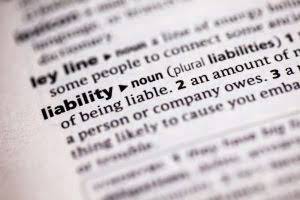
If a company prices its products so low that revenues do not cover its overhead costs, the business will be unprofitable. The application rate that will be used in a coming period, such as the next year, is often estimated months before the actual overhead costs are experienced. Often, the actual overhead costs experienced in the coming period are higher or lower than those budgeted when the estimated overhead rate or rates were determined. At this point, do not be concerned about the accuracy of the future financial statements that will be created using these estimated overhead allocation rates. You will learn in Determine and Disposed of Underapplied or Overapplied Overhead how to adjust for the difference between the allocated amount and the actual amount. A predetermined overhead rate is an allocation rate that is used to apply the estimated cost of manufacturing overhead to cost objects for a specific reporting period.
- Therefore, the predetermined overhead rate of GHJ Ltd for next year is expected to be $5,000 per machine hour.
- Different businesses have different ways of costing; some use the single rate, others use multiple rates, and the rest use activity-based costing.
- Overhead is then applied by multiplying the pre-determined overhead rate by the actual driver units.
- Manufacturing overhead is allocated to products for various reasons including compliance with U.S. accounting principles and income tax regulations.
- If the overhead rate is recomputed at the end of each month or each quarter based on actual costs and activity, the overhead rate would go up in the winter and summer and down in the spring and fall.
- If sales and production decisions are being made based in part on the predetermined overhead rate, and the rate is inaccurate, then so too will be the decisions.
4 Compute a Predetermined Overhead Rate and Apply Overhead to Production
- Its production department comes up with the details of how much the overheads will be and what other costs will be incurred.
- The predetermined overhead rate formula is calculated by dividing the estimated manufacturing overhead cost by the allocation base.
- Company B wants a predetermined rate for a new product that it will be launching soon.
- Overhead costs are those expenses that cannot be directly attached to a specific product, service, or process.
- On your current project (coded as J-17), your division has spent $2,600 on direct materials; therefore, the predetermined overhead for this project will be $4,550 ($2,600 × 175%).
JKL allocates the manufacturing overhead based on the normal and expected number of production machine hours which are 20,000 for the new year. Therefore, the JKL’s predetermined manufacturing overhead rate for the new year will be $60 ($1,200,000/20,000) per production machine hour. As you have learned, the overhead needs to be allocated to the manufactured product in a systematic and rational manner.
Overhead Rate Formula and Calculation
What Apple Does Well: Cost Management (NASDAQ:AAPL) – Seeking Alpha
What Apple Does Well: Cost Management (NASDAQ:AAPL).
Posted: Wed, 03 Aug 2011 07:00:00 GMT [source]
The company estimates a gross profit of $100 million on total estimated revenue of $250 million. As per the budget, direct labor cost and raw material cost for the period is expected to be $40 million and $60 million respectively. The company uses machine hours to assign manufacturing overhead costs to products. Calculate the predetermined overhead rate of GHJ Ltd if the required machine hours for next year’s production is estimated to be 10,000 hours.
Hey, Did We Answer Your Financial Question?
The estimate is made at the beginning of an accounting period, before the commencement of any projects or specific jobs for which the rate is needed. However, one major disadvantage of the method is that both the numerator and the denominator are estimates and as such, it is possible that the actual result may vary significantly from the predetermined overhead rate. Overhead expenses are generally fixed costs, meaning they’re incurred whether or not a factory produces a single item or a retail store sells a single product. Fixed costs would include building or office space rent, utilities, insurance, supplies, and maintenance and repair. Overhead costs also include administrative salaries and some professional and miscellaneous fees that are tucked under selling, general, and administrative (SG&A) within a firm’s operating expenses on the income statement. Unless a cost can be directly attributable to a specific revenue-generating product or service, it will be classified as overhead, or as an indirect expense.
The company would then estimate what the predetermined overhead cost would be and divide them to determine what the manufacturing overhead cost would be. The controller of the Gertrude Radio Company wants to develop a predetermined overhead rate, which she can use to apply overhead more quickly in each reporting period, thereby allowing for a faster closing process. A later analysis reveals that the actual amount that should have been assigned to inventory is $48,000, so the $2,000 difference is charged to the cost of goods sold.
- The predetermined overhead rate is the estimated cost of manufacturing a product.
- When companies manufacture products, sell merchandise, or provide services, they experience a variety of costs in the process.
- If overhead is overestimated, then prices will be too high and that can cause customers to seek their products or services from other companies (most likely their competitors).
- Overhead costs is the term used to refer to expenses that are not directly related to any specific task or job.
- Small companies tend to use activity-based costing, whereas in larger companies, each department in which different processes of production take place typically computes its own predetermined overhead rate.
- Based on the manufacturing process, it is also easy to determine the direct labor cost.

Also, it’s important to compare the overhead rate to companies within the same industry. A large company with a corporate office, a benefits department, and a human resources division will have a higher overhead rate than a company that’s far smaller and with fewer indirect costs. Overhead costs are expenses that are not directly tied to production such as the cost of the corporate office. To allocate overhead costs, an overhead rate is applied to the direct costs tied to production by spreading or allocating the overhead costs based on specific measures.

Enter the total manufacturing overhead cost and the estimated units of the allocation base for the period to determine the overhead rate. The term “predetermined overhead rate” refers to the allocation rate that is assigned to products or job orders at the beginning of a project based on the estimated cost of manufacturing overhead for a specific period of reporting. Suppose the estimated manufacturing overhead cost is $ 250,000 and the estimated labor hours is 2040. Overhead for a particular division, product, or process is commonly linked to a specific allocation base.
- This is related to an activity rate which is a similar calculation used in Activity-based costing.
- The predetermined overhead rate is found by taking the total estimated overhead costs and dividing by the estimated allocation base.
- So, if you were to measure the total direct labor cost for the week, the denominator would be the total weekly cost of direct labor for production that week.
- The movie industry uses job order costing, and studios need to allocate overhead to each movie.
- For the last three years, your team found that the total overhead rate has been between 1.7 and 1.8 times higher than the direct materials rate.
- A financial professional will offer guidance based on the information provided and offer a no-obligation call to better understand your situation.
Problems with Predetermined Overhead Rates
